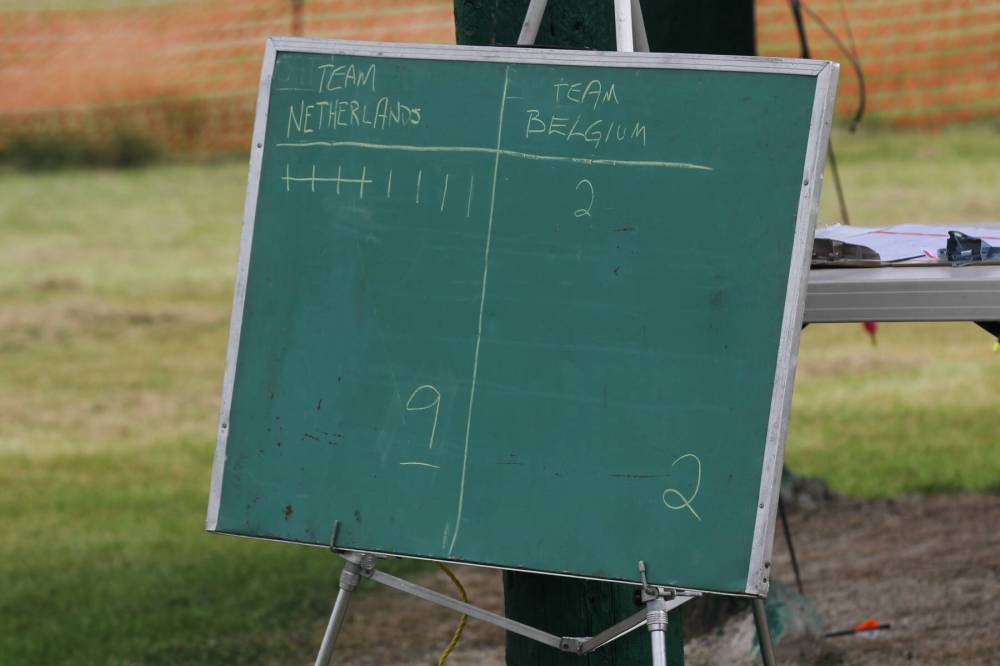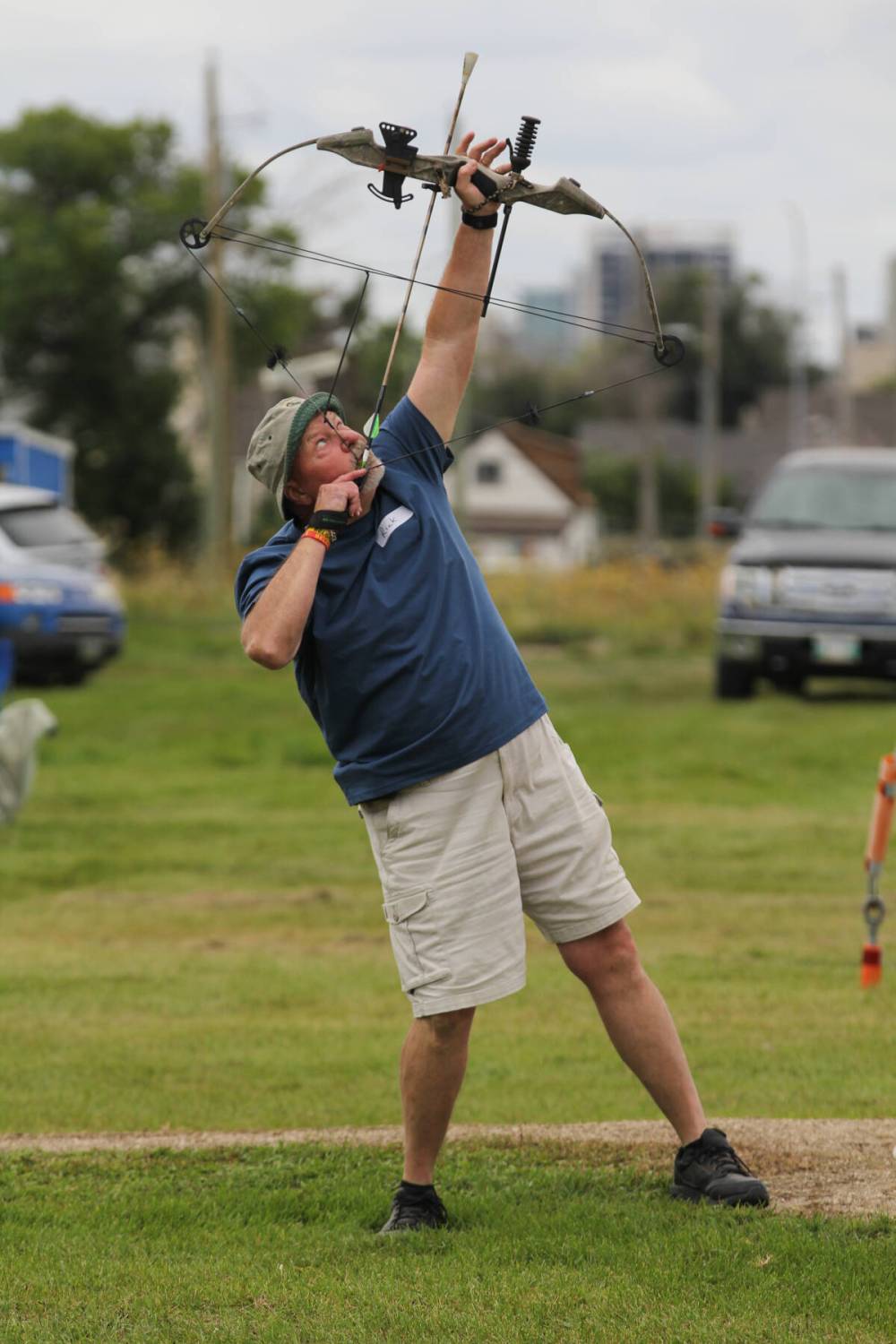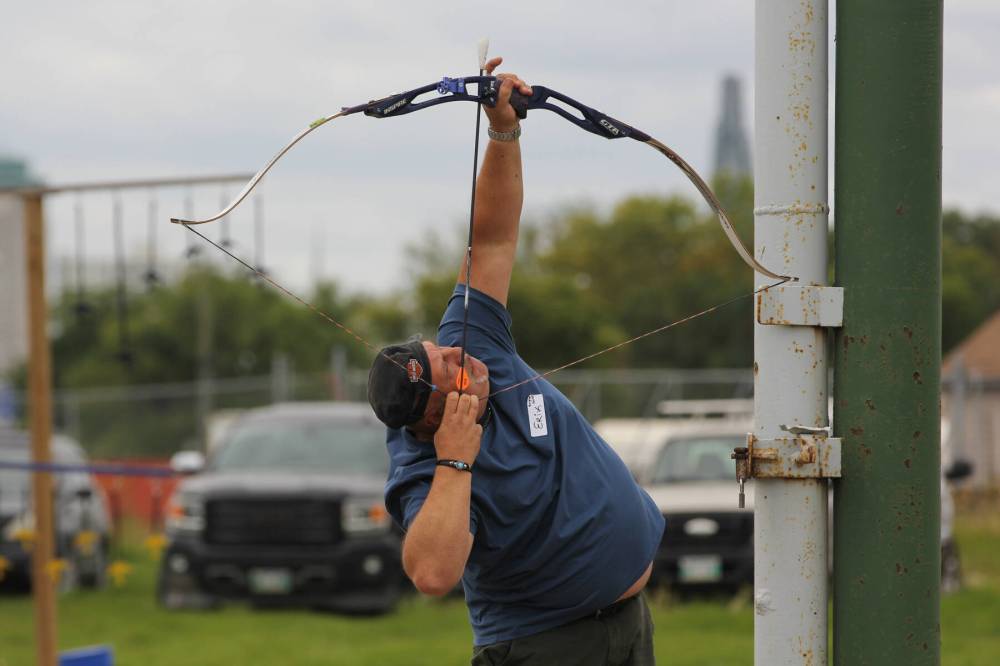Sure shot
Belgian pole archery club champions tradition
Advertisement
Hey there, time traveller!
This article was published 21/09/2022 (1107 days ago), so information in it may no longer be current.
ST. BONIFACE
ST. VITAL
A crowd of onlookers with their chins tilted to the sky trace an arrow as it reaches its zenith before dropping earthward at an angle just shy of 90 degrees. Their eyes follow the shaft’s trajectory in unison, estimating where its point of contact might be — lest one become an unintended target.
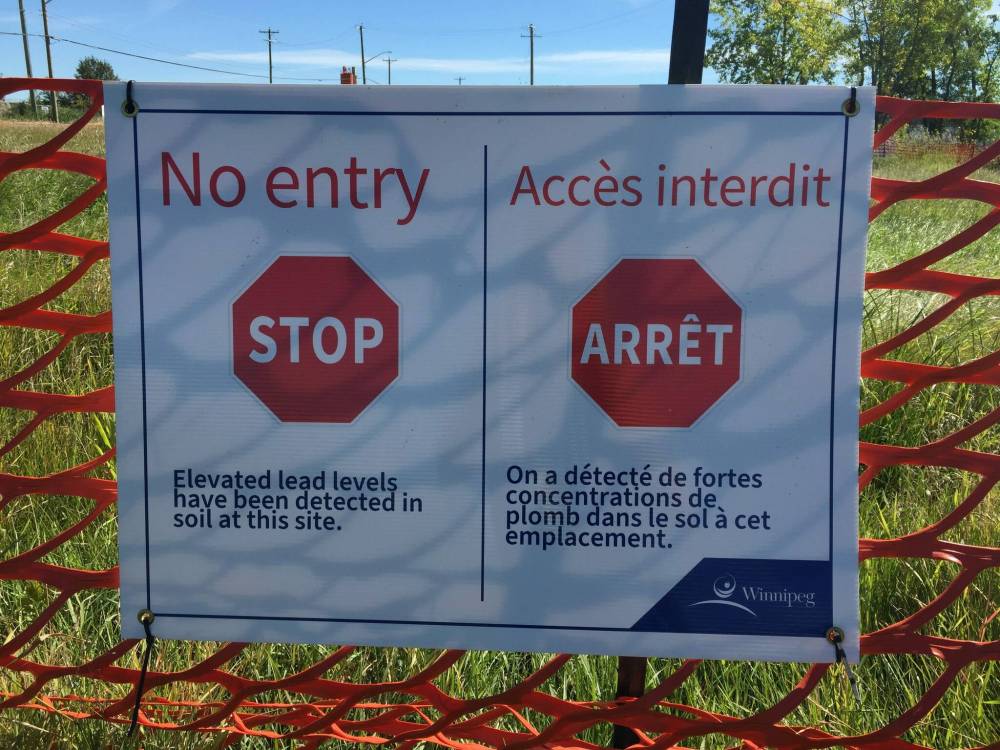
In June, the City of Winnipeg cordoned off a portion of Mission Park No. 1/William Tell Archery due to high levels of lead concentration in that section of the park.
With a hollow ping, the arrow’s blunt rubber top strikes a viewing canopy’s deep green metal roof, under which more than a dozen Belgian pole archers take shelter.
“We watch out for each other for safety purposes, so if somebody pushes you away, they’re doing it for your own safety — don’t be offended by it,” said Laurry Lesage, a longtime Robin Hood Pole Archery Club member.
For more than nine decades, members of the St. Boniface-based Robin Hood Pole Archery Club have been shooting for the stars.
Whether that sentiment is weighted more in favour of the figurative than the literal is perhaps less important than the fact that the club, established in Winnipeg in 1929, has continued to uphold the centuries-old tradition of Belgian pole archery, which is also sometimes called popinjay in Europe.
According to Archery Manitoba, pole archery — an outdoor pursuit characterized by shooting arrows vertically — is believed to have started in Belgium as far back as the 11th century. Modern-day pole archers use compound and recurve bows and the occasional longbow to shoot double-shafted, capped arrows at targets known as birds. (Lesage opts for the compound bow.)
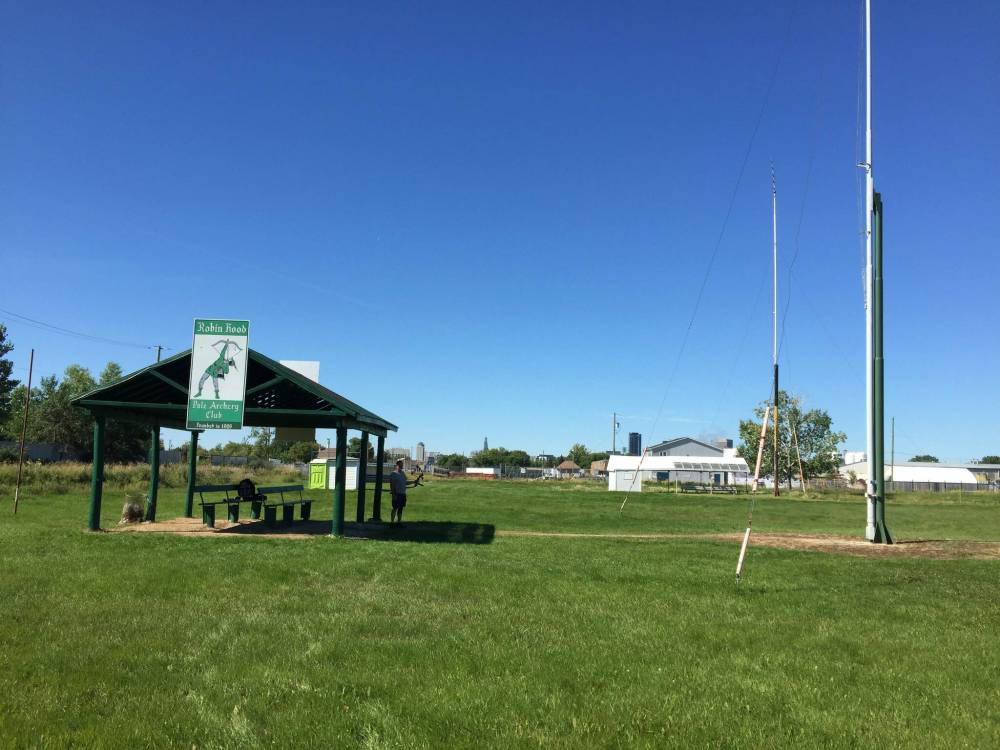
The Robin Hood Pole Archery Club currently shoots at Mission Park No. 1/William Tell Archery.
The birds sit on the branches of a pole, also known as forks, where the featured clusters, representing different point values, are placed. The pole is crowned by the single most valuable king or queen bird. The vertical fork is approximately 110 feet high and is hinged so it can be lowered to the ground.
As well as the Robin Hood Pole Archery Club, the St. Boniface-based St. Sebastian Pole Archery Club and St. Sebastianette Archery Club, plus the Ste. Rose du Lac-based Witty Belgian Archers, are member organizations of the Manitoba Pole Archery Association.
Belgian pole archery is the only type of archery sport permitted to shoot outdoors inside city limits owing to the blunt tips of the arrows. Though the rubber end absorbs force upon impact, it still packs a wallop, the 62-year-old said.
“Some guys have got hit in the head. It can break the skin,” Lesage said, adding that the risk of minor injury is a drawback of the sport, though no pun was intended. “A buddy of mine who got me into the sport many years ago, he got hit. Went to pick up his arrow and it knocked him right down to the knees.”
Lesage has a passion for the sport as focused and exact as his shot. The 40-plus-year club veteran proudly wears the title of ‘emperor’. The player who, for three years in a row, shoots down the king bird during the first club meet of the year earns the title.
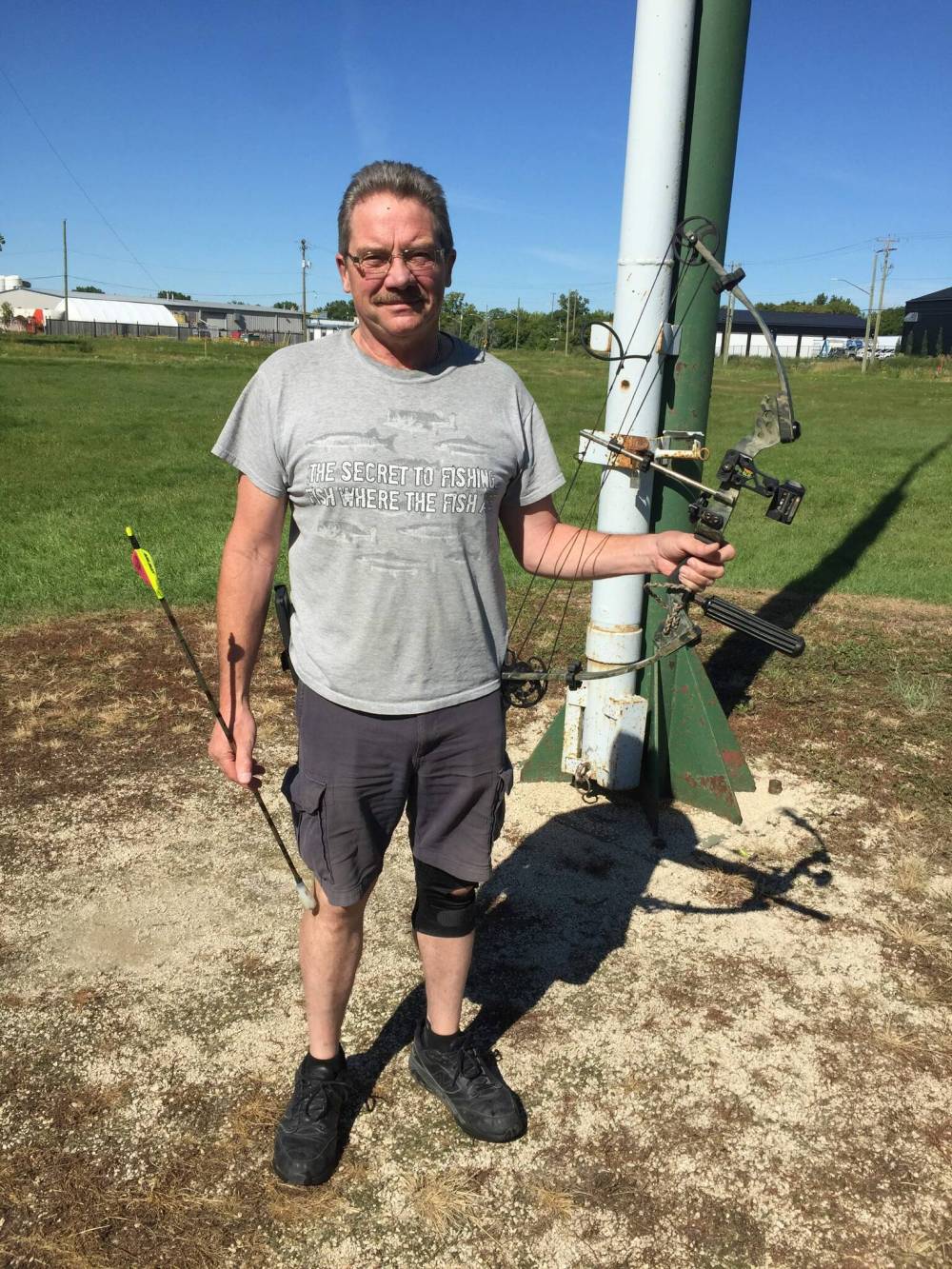
Laurry Lesage is pictured at Mission Park No. 1/William Tell Archery in St. Boniface recently.
“I actually got four years in a row,’ Lesage said. “Raised the bar a little higher.”
He said the history of the club is connected to origins of the Belgian Club on Provencher Boulevard — a relationship that still exists today.
“The Belgian Club serves as our clubhouse after we have our shoots, and we also have functions there,” said Lesage, who has held numerous board positions with the Robin Hood club over the years.
Talking about the continuing role of RHPAC in the community, the St. Vital resident said it gives participants the chance to keep the sport and its origins alive.
“It gives us the chance to carry on embracing our Belgian heritage here,” Lesage said. “Also, you may not be of Belgian descent, but once you’ve had a few shots, it gets in your blood and keeps you coming back for more.
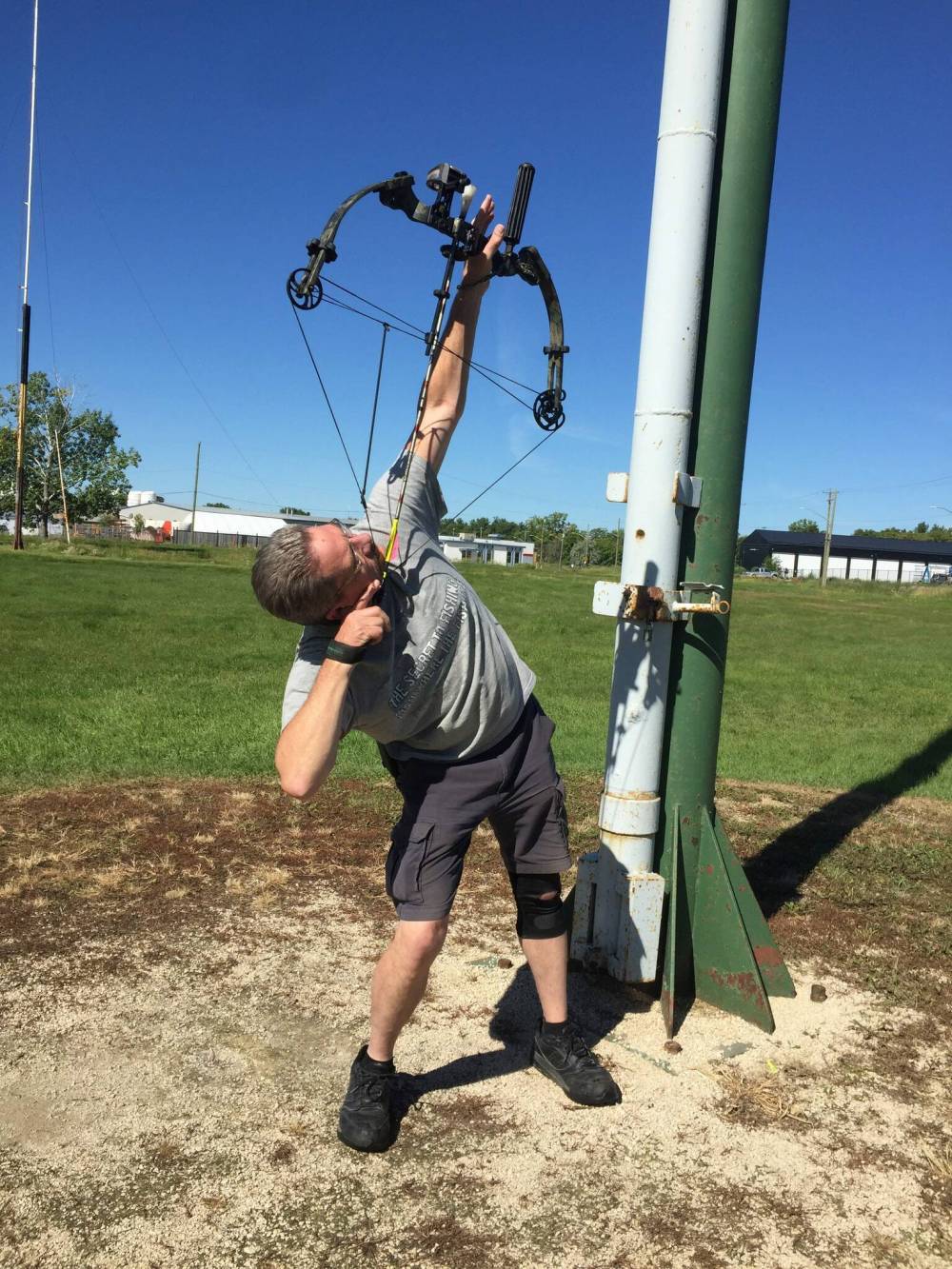
Laurry Lesage is pictured at Mission Park No. 1/William Tell Archery in St. Boniface recently.
“It’s up to you how competitive you want it be,” he added. “Personally, I like to have fun and getting better at it, but I also really enjoy helping others. I’m there for the camaraderie and helping others. I have more than 40 years of knowledge of the sport, and it’s important to me to be able to share this.”
As for the participation base of the local clubs, Lesage said there are some younger archers who play other sports who come out to try Belgian pole archery for the first time — “hopefully shooting with us will instill a good feeling, so they’ll be back again sometime” — but it is predominantly an established group of diehards.
“We do have some aging members — there are lots of grey hairs,” he said, with a laugh. “I’d encourage potential members to come out and give it a try. You can be as competitive as you want, plus you get the chance to challenge yourself,” Lesage said.
The Winnipeg-based clubs currently shoot at a triangular piece of green space called Mission Park No. 1/William Tell Archery, which is sandwiched between Mission Street, Provencher Boulevard and Dawson Road North in an area located in what has traditionally been home to industry and the railway.
In June, the City of Winnipeg cordoned off a portion of the archery park after high levels of lead concentration were detected. Archery Manitoba advocated for and represented the local clubs as the parties dealt with the situation, Lesage said.
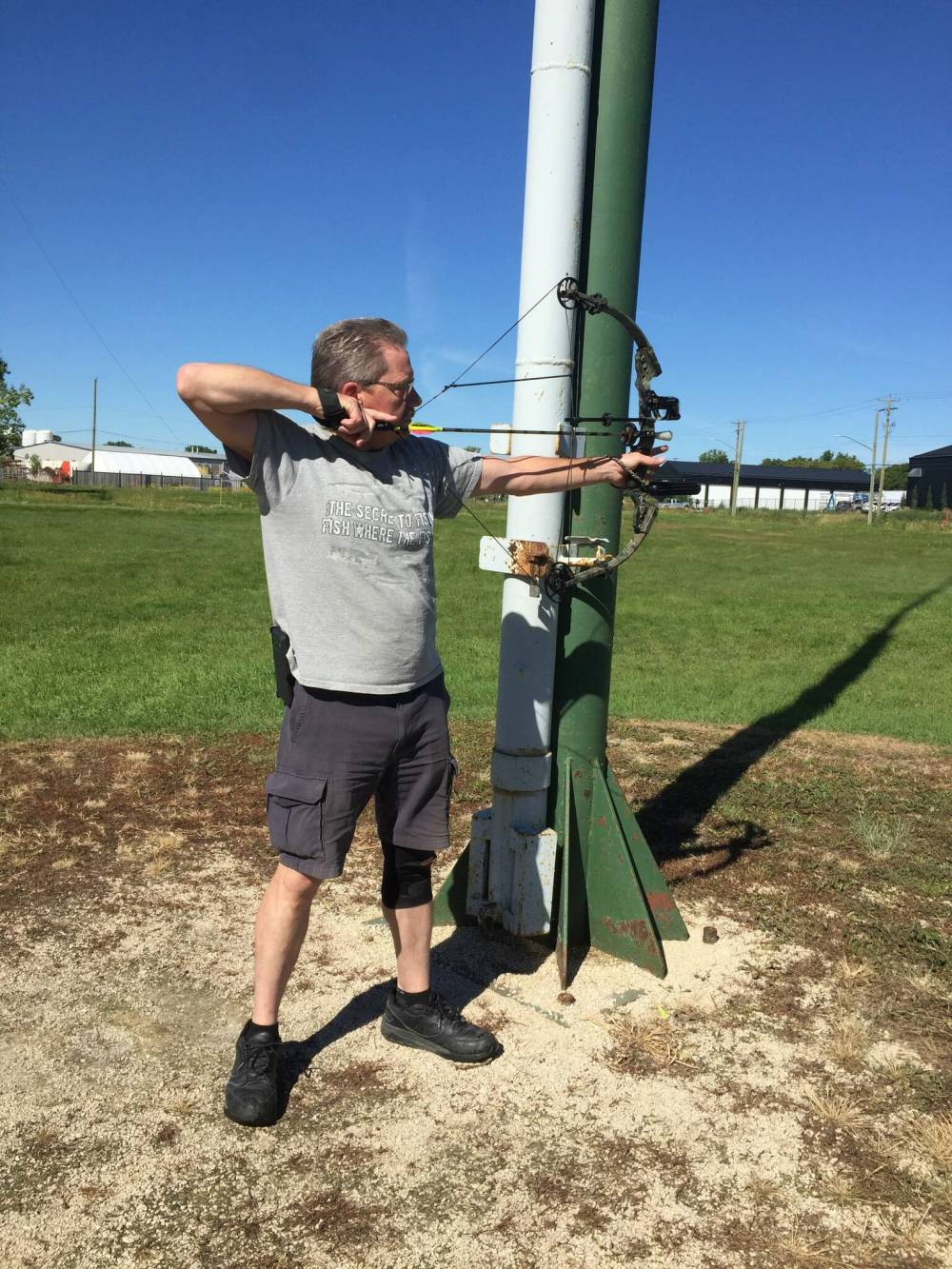
Laurry Lesage is pictured at Mission Park No. 1/William Tell Archery in St. Boniface recently.
Once the area was fenced off, the local clubs were able to start their seasons.
“At first, we were told we wouldn’t be able to shoot there, at all, but an agreement was reached to fence off the affected area. There was talk, at one time, of relocating us, but we worked for a compromise,” Lesage said, noting there’s some uncertainty about the long-term future of the clubs.
Ideally, Lesage would love to see the club relocated to a higher visibility area, such as Whittier Park, where more people would get to see the spectacle of the shoots. Such a move is easier said than done, of course, and would require a caged area, but the vision gives organizers something to shoot for.
Lesage explained that in Belgium, some pole archers use a caged, conical metal structure, similar in form to a radio tower, that’s lit internally. The cage allows archers to play on well past dusk.
“We’ve been trying to talk to manufacturers to get some drawings … We just need them for the dimensions and that,” Lesage said. “We’d get our engineering company to redesign it for Manitoba standards … That’s our goal.”

Laurry Lesage is pictured at Mission Park No. 1/William Tell Archery in St. Boniface recently.
For now, Lesage is pleased the local clubs will be able to finish their respective seasons, which — at press time — were scheduled to end in style. The club, which hosts most meetings during the evening, wraps up its season as the days grow shorter. Naturally, arrows and darkness don’t mix.
“It’s hard enough watching the arrows in the daylight,” Lesage said.
The last shoot of the season was scheduled for Sept. 18, when members were gearing up for a prize shoot-off with cash and prizes at stake. Prior to that, on Sept. 10, members welcomed visitors from Belgium and the Netherlands for a fun shoot followed by a meal at the Belgian Club.
In 2019, more than two dozen members of the RHPAC travelled to Belgium to mark the club’s 90th anniversary with an archery meet. Later that year, Belgian archer Erik de Smet contacted Lesage to ask if he’d care to host a similar exchange in Winnipeg. De Smet and his wife Paula Lambregts made the trip overseas, along with Osselaer and Marjon van Osslaer from the Netherlands.
“It’s a great honour,” Lesage said. He added that for the RHPAC’s 100th anniversary in 2029, archery federations from Belgium, France, and the Netherlands had shown interest in making the pilgrimage to Winnipeg. “We have to do whatever we can do to keep this sport going.”
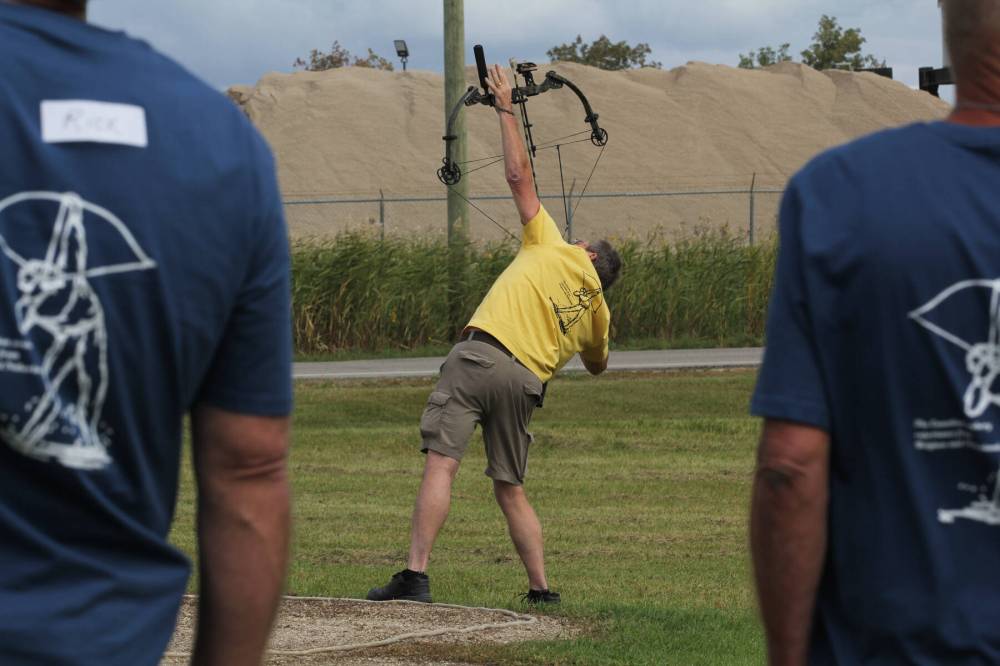
After a mad dash through Toronto’s Pearson airport, de Smet and Lambregts, whose native language is Flemish, landed in Winnipeg. It was de Smet’s first-ever plane ride.
“It’s great to be here. Great to make new friends. It’s an incredible day. We’ve been here for two days now, and it’s amazing,” de Smet said. “It’s great to see how the sport continues over here. To be among friends.”
De Smet describes forging a strong friendship with Lesage and his fellow RHPAC players.
“We are very grateful for that,” the 55-year-old said.
The day’s tournament was split into two teams: team Belgium and team Netherlands, though the rosters were randomly drawn. Participants ranged in age from teens to seniors. One archer used a metal device to stabilize her shot, an accessibility tool the other players helped facilitate.
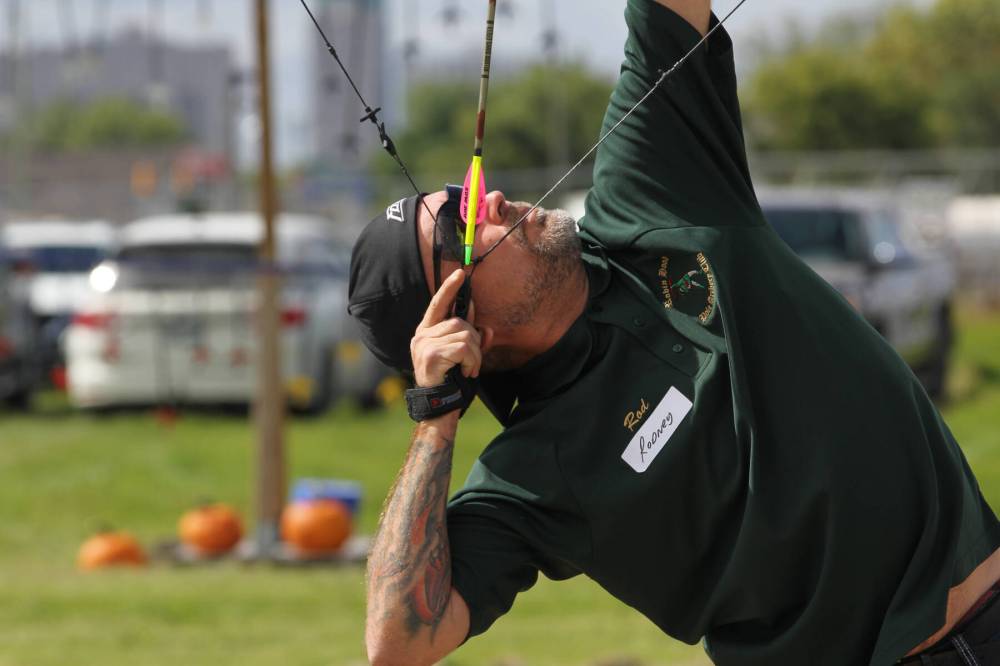
Since bows aren’t a simple item to transport on a commercial aircraft, the RHPAC lent a bow to de Smet for the weekend (Lambregts took a break for a shoulder injury). Despite the borrowed bow, de Smet had a tricky time scoring points that day. In Belgium, the archery pole is two metres shorter, as well.
“The bird’s going to come down sooner or later … It’s a new experience,” de Smet said, with a laugh.
The following day, RHPAC and its European guests travelled to Ste. Rose du Lac, a community roughly 300 kilometres west of Winnipeg, for a second round of archery. This time, at a site that predates its St. Boniface sister.
Belgian pole archery started in Canada in Ste. Rose du Lac in 1925. Using a team of horses, community members fell and dragged tamarack from Riding Mountain National Park across the snowy rolling hills into town.
RHPAC member Lionel Lepla, whose family immigrated from Belgium in 1895, explained that his grandfather, Jerome Lepla, helped splice together these tamaracks to form Canada’s first-ever archery pole. The men assembled the archery pole about a mile from the Lepla family farm in Ste. Rose du Lac.
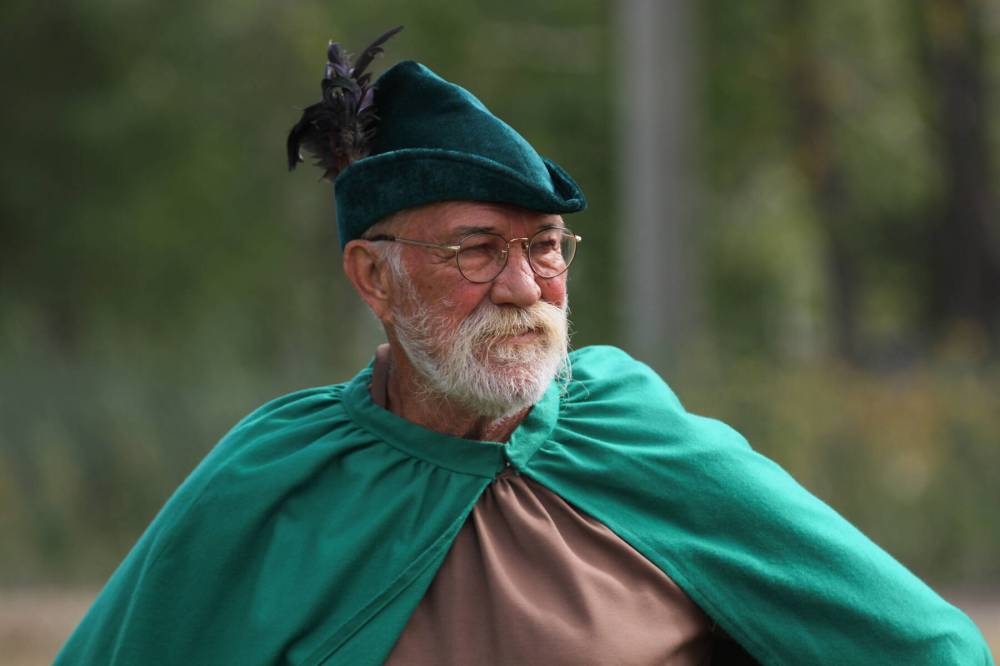
“My brother still lives on that original farm. That’s five generations,” he said. “We’ve been shooting there since 1925 in St. Rose du Lac. There’s a long tradition of Belgian people, French-descended people, and we just try to carry that sport on as long as we can.”
Go online at robinhoodarcheryclub.com or visit Robin Hood Pole Archery Club on Facebook for more information.


Katlyn Streilein
Katlyn Streilein was a reporter/photographer for the Free Press Community Review.
Our newsroom depends on a growing audience of readers to power our journalism. If you are not a paid reader, please consider becoming a subscriber.
Our newsroom depends on its audience of readers to power our journalism. Thank you for your support.





